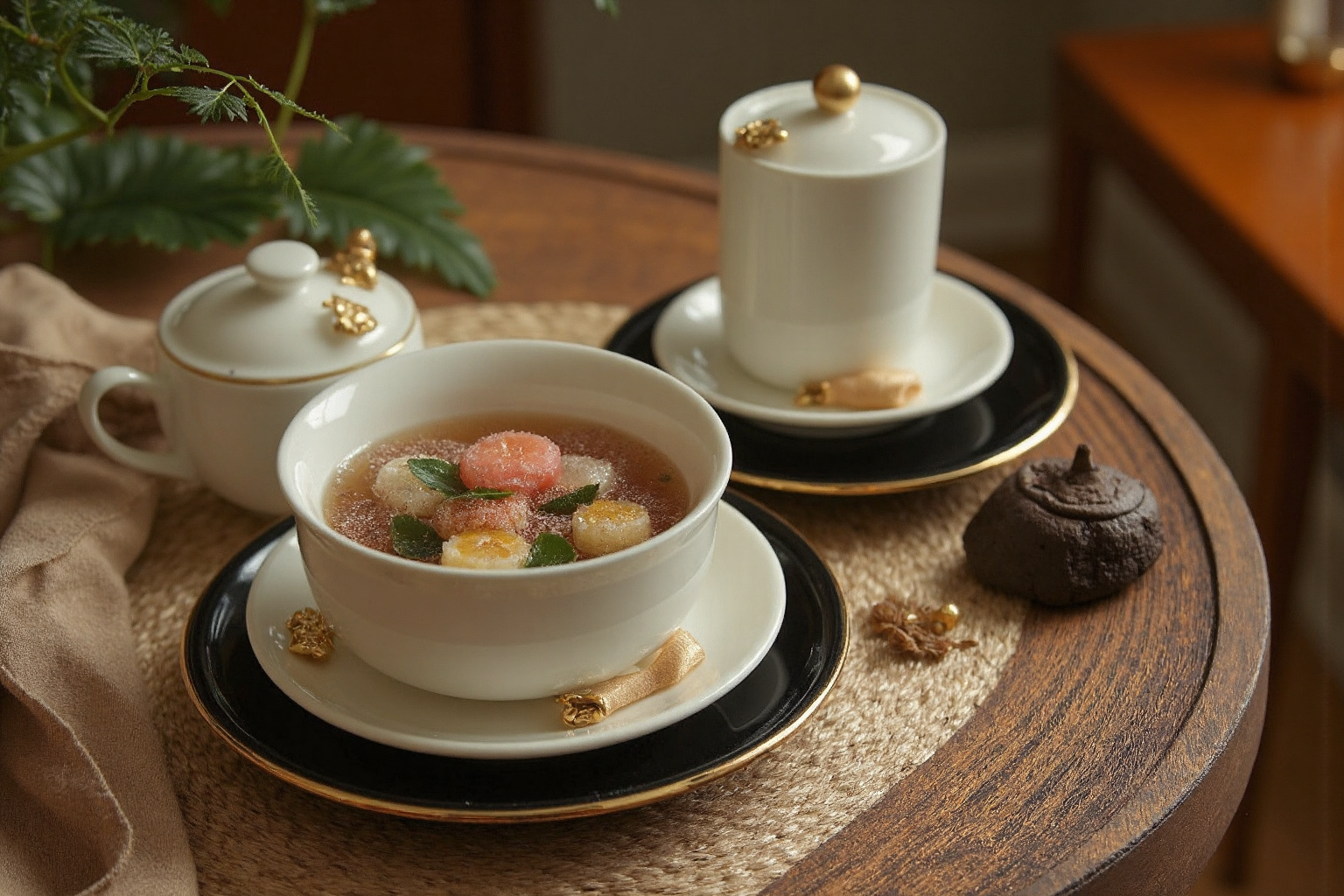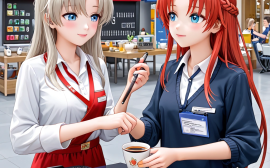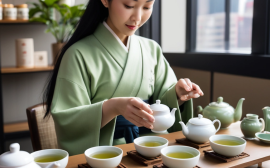Elevating the Art of Tea: A Guide to Luxury Tea Experiences
Beyond the simple act of brewing leaves steeping in hot water, lies a world of exquisite sensory experiences waiting to be explored. Luxury tea experiences are transforming the way we appreciate this ancient beverage, moving it beyond a simple refreshment to a sophisticated ritual. This comprehensive guide delves into the art of curating unforgettable tea moments, appealing to the discerning palates of today’s luxury consumer, who seeks not just quality, but also authenticity and a story behind every sip.
We’ll explore the nuances that elevate a simple cup to a truly exceptional experience, encompassing everything from the origin of the leaves to the artistry of the presentation. The modern luxury tea experience is about more than just the beverage itself; it’s a holistic immersion into tea culture. This includes understanding the history and traditions associated with different tea varieties, such as the intricate Japanese tea ceremony or the refined British afternoon tea. These cultural elements add depth and meaning to the experience, transforming it from a mere consumption activity into an enriching exploration of global heritage.
The rise of the tea sommelier, a trained expert in tea tasting and pairing, further emphasizes this shift towards a more sophisticated appreciation of tea. Central to any high-end tea service is the quality and rarity of the tea itself. Connoisseurs seek out single-origin teas from renowned estates, appreciating the unique terroir that influences the flavor profile. For example, a first-flush Darjeeling from India, known for its delicate floral notes, commands a premium price and is highly sought after by collectors.
Similarly, aged pu-erh from Yunnan, China, offers a complex and earthy flavor that evolves over time, making it a prized possession for tea enthusiasts. Sourcing these exceptional teas requires expertise and a commitment to ethical and sustainable practices, ensuring that the luxury tea experience is both indulgent and responsible. Complementing the fine tea selection is the artful presentation, which plays a crucial role in enhancing the overall luxury tea experience. The choice of teaware, from delicate porcelain cups to handcrafted cast iron teapots, contributes to the aesthetic appeal and the tactile pleasure of the ritual.
Consider the elegant simplicity of a Japanese kyusu teapot, designed to perfectly brew green tea, or the ornate beauty of a silver tea set, evoking a sense of timeless elegance. Furthermore, the way the tea is served, whether in a traditional tea ceremony or a modern high-end tea service, adds another layer of sophistication and refinement. Finally, the personalized touch elevates a luxury tea experience from memorable to unforgettable. Understanding the preferences of each guest and tailoring the tea selection and food pairings accordingly demonstrates a commitment to exceptional service. A skilled tea sommelier can guide guests through the nuances of different teas, suggesting pairings that complement their individual tastes. This level of attention to detail, combined with a sophisticated ambiance and impeccable service, creates a truly immersive and personalized experience that resonates with the discerning luxury consumer. The future of luxury tea lies in this ability to curate bespoke experiences that cater to the individual desires of each guest.
The Essential Elements of a Luxury Tea Service
Sourcing and Selection:
The foundation of any luxury tea experience rests upon the quality of the tea itself. Sourcing rare and premium varieties is paramount, elevating the simple act of drinking tea into a moment of refined indulgence. Consider the nuanced flavors of a Silver Needle white tea, prized for its delicate sweetness and silvery buds, or the earthy complexity of an aged pu-erh, a fermented tea with a history as rich as its taste.
Beyond these, explore first-flush Darjeelings from India, known as the ‘Champagne of Teas,’ or the meticulously crafted gyokuro from Japan, shaded for weeks to enhance its umami notes. The origin, processing, and rarity of the tea leaves directly impact the perceived luxury and the overall sensory journey, making informed sourcing a critical element of a high-end tea service. Tea sommeliers, with their deep knowledge of varietals and estates, are invaluable in curating a truly exceptional selection.
Teaware and Presentation:
Complementing fine teas with exquisite teaware elevates the aesthetic appeal and enhances the ritual of tea consumption. Consider delicate porcelain cups, perhaps crafted by renowned artisans, that allow the tea’s color to shine through. Handcrafted teapots, whether made of Yixing clay or delicate glass, not only brew the tea perfectly but also serve as objects of art. Elegant serving trays, perhaps made of silver or lacquered wood, add a touch of sophistication.
The weight and feel of the teaware in the hand, the gentle clinking of the porcelain, and the visual harmony of the set all contribute to the overall luxury tea experience. The presentation should be as carefully considered as the tea itself, transforming a simple beverage into a feast for the senses.
Ambiance:
Creating an inviting atmosphere sets the stage for a memorable luxury tea experience. Soft lighting, perhaps from candles or dimmed chandeliers, casts a warm and welcoming glow.
Calming music, whether classical melodies or ambient soundscapes, contributes to a sense of tranquility and sophistication. Tasteful decor, featuring elegant floral arrangements, plush seating, and curated artwork, creates a visually appealing and relaxing environment. The goal is to transport guests away from the everyday and into a world of refined elegance. A well-designed ambiance enhances the sensory experience, allowing guests to fully appreciate the flavors, aromas, and textures of the tea and its accompanying treats.
The setting should be an oasis of calm, encouraging relaxation and conversation. Beyond these core elements, several other factors contribute to a truly exceptional luxury tea experience. The water used for brewing is crucial; filtered or spring water, heated to the precise temperature for each tea varietal, ensures optimal flavor extraction. The timing of the infusion is also critical, requiring careful attention to detail to avoid bitterness or under-extraction. A knowledgeable tea sommelier can guide guests through the nuances of each tea, explaining its origin, flavor profile, and optimal brewing method.
This personalized service elevates the experience from a simple tea service to an educational and engaging journey. Furthermore, the concept of premium tea pairing has gained prominence in recent years. Just as wine is paired with food, certain teas complement specific culinary offerings. Light and floral white teas pair well with delicate pastries and fruit tarts, while bolder black teas complement savory sandwiches and rich chocolate desserts. This thoughtful pairing enhances both the tea and the food, creating a harmonious and unforgettable culinary experience. Exploring these pairings adds another layer of sophistication to the luxury tea experience, showcasing the versatility and complexity of fine tea.
Perfect Pairings and Personalized Service
Culinary Pairings:
The art of a luxury tea experience extends far beyond the cup, blossoming into a symphony of flavors when thoughtfully paired with complementary cuisine. Sweet treats, such as delicate French macarons with their almond meringue shells and creamy fillings, harmonize beautifully with the floral notes of lighter teas like Darjeeling or white tea. The confection’s subtle sweetness enhances the tea’s inherent delicacy without overpowering it. For a richer experience, consider pairing buttery pastries, such as croissants or madeleines, with a fragrant oolong, where the tea’s toasted notes echo the pastry’s golden crust.
Conversely, savory bites provide a counterpoint to bolder teas. Finger sandwiches with cucumber and cream cheese offer a refreshing contrast to the tannins in black teas like Assam, while miniature quiches or canapés featuring smoked salmon or foie gras elevate the high-end tea service to a truly decadent affair. The key is to create a balanced interplay of flavors that enhances both the tea and the food.
Premium Tea Pairing Considerations:
The principles of wine pairing can be cleverly adapted to the world of fine tea.
Just as a sommelier considers the weight, acidity, and tannins of wine when suggesting a food match, a luxury tea experience curator will assess the tea’s body, aroma, and finish. For instance, a robust pu-erh, with its earthy and complex notes, can stand up to richer, more intensely flavored dishes, such as aged cheeses or even dark chocolate desserts. A lighter green tea, on the other hand, is best suited to more delicate fare, such as fresh fruit salads or steamed vegetables.
Texture also plays a vital role; the crispness of a shortbread cookie can provide a delightful contrast to the smooth, velvety texture of a well-brewed matcha. Ultimately, the goal is to create a harmonious and memorable culinary journey.
Personalized Service:
Attentive and knowledgeable service is the cornerstone of any exceptional luxury tea experience. A skilled tea sommelier acts as a guide, navigating guests through the vast and often complex world of tea, offering personalized recommendations based on individual preferences and palates.
This involves more than simply presenting a menu; it requires an understanding of each tea’s origin, processing methods, and flavor profile. A tea sommelier should be able to articulate the nuances of each tea, explaining how factors such as terroir and oxidation levels influence the final cup. Moreover, they should be adept at discerning a guest’s preferences through thoughtful questioning, identifying whether they prefer floral, fruity, earthy, or smoky notes.
The Role of the Tea Sommelier:
The tea sommelier’s expertise extends beyond simple recommendations.
They are also responsible for ensuring that each tea is prepared and served to perfection. This includes selecting the appropriate teaware, controlling water temperature, and mastering brewing techniques. They might also conduct a mini tea ceremony, showcasing the traditional methods of preparing and serving specific teas, further immersing guests in tea culture. In addition, they can educate guests on the history and cultural significance of different teas, enriching the overall experience and fostering a deeper appreciation for this ancient beverage.
The presence of a knowledgeable and passionate tea sommelier transforms a simple afternoon tea into an unforgettable journey of discovery.
Elevating the Tea Culture Experience:
In the realm of luxury tea, personalization extends beyond individual preferences to encompass cultural sensitivity and awareness. Understanding the nuances of different tea cultures – from the Japanese tea ceremony to the British afternoon tea – is crucial for creating authentic and respectful experiences. Incorporating elements of these traditions, such as serving tea in traditional teaware or offering specific food pairings, can add depth and meaning to the experience. Moreover, luxury establishments are increasingly embracing sustainable and ethical sourcing practices, ensuring that their teas are not only of the highest quality but also produced in a way that benefits both the environment and the communities that cultivate them. This commitment to sustainability resonates with today’s discerning consumers, who are increasingly seeking out brands that align with their values and promote responsible consumption. These tea trends contribute to an elevated, modern fine tea experience.
Analyzing Successful Luxury Tea Experiences
Analyzing successful luxury tea experiences reveals key elements that elevate this ancient ritual to an art form. The Ritz-Carlton, Hong Kong, exemplifies this with its opulent afternoon tea service set against panoramic city views. This experience seamlessly blends impeccable service with a stunning ambiance, offering a curated selection of rare teas presented with exquisite teaware. While its formal setting might not suit every guest, the meticulous attention to detail, from the delicate porcelain cups to the knowledgeable tea sommeliers, creates an unforgettable high-end tea service.
This commitment to excellence caters to a discerning clientele seeking a truly luxurious experience, reflecting a growing trend in high-end hospitality. The premium tea pairings, often featuring delicate pastries and savory canapés, further enhance the experience, demonstrating a deep understanding of how culinary elements can complement fine teas. However, adapting to evolving consumer preferences, such as incorporating more contemporary or personalized elements, could broaden the appeal of this classic experience. TWG Tea Salon & Boutique in Singapore offers a different approach to luxury tea, focusing on an extensive selection of teas from around the world.
Presented in a sophisticated retail setting, TWG allows tea enthusiasts to explore a vast array of flavors and aromas, guided by knowledgeable staff. This educational aspect of the tea experience appeals to a growing segment of consumers interested in deepening their understanding of tea culture. While the bustling atmosphere can be crowded during peak hours, the sheer variety and expertise available make it a destination for both connoisseurs and curious newcomers. The brand’s success highlights the importance of education and accessibility in the luxury tea market.
By offering a diverse range of price points and brewing methods, TWG caters to a wider audience while maintaining a focus on quality and presentation. Furthermore, TWG’s innovative tea-infused pastries and macarons demonstrate a creative approach to tea pairings, appealing to the modern palate. Mariage Frères in Paris represents a more traditional approach to luxury tea. This historic tea house boasts a vast collection of teas and tea-infused pastries, steeped in heritage and tradition. The strength of Mariage Frères lies in its unique tea blends and the sense of history it evokes.
However, its limited seating and traditional approach may not resonate with all modern tea drinkers. The experience focuses on the purity and authenticity of tea, emphasizing the origins and nuances of each variety. While this traditional approach might not embrace the same level of personalized service as other luxury tea experiences, it offers a unique glimpse into the rich culture of tea. Looking ahead, incorporating elements of modern tea culture, such as interactive workshops or tea tasting events, could further enrich the experience and attract a wider audience.
Ultimately, Mariage Frères demonstrates the enduring appeal of heritage and tradition in the ever-evolving world of luxury tea. The Landmark Mandarin Oriental in Hong Kong offers a contemporary take on afternoon tea, collaborating with fashion houses or artists to create themed experiences. This innovative approach infuses traditional tea service with modern aesthetics and cultural relevance, attracting a younger demographic. The emphasis on visual presentation and artistic collaborations positions afternoon tea as a lifestyle experience, extending beyond the beverage itself.
This strategy reflects a growing trend in the luxury market, where brands seek to create immersive and multi-sensory experiences. The Peninsula Hotel in Tokyo offers another noteworthy example, with its meticulously curated tea ceremonies performed in a serene setting. This focus on ritual and mindfulness elevates the tea experience to a meditative practice, appealing to those seeking tranquility and cultural immersion. The highly trained tea masters guide guests through each step of the ceremony, explaining the significance of the movements and the specific tea being served. This personalized and educational approach resonates with a growing interest in mindfulness and wellness within the luxury market, highlighting the potential of tea rituals to provide a moment of respite and reflection in a fast-paced world.
Future Trends and Actionable Tips
The future of luxury tea lies in a trifecta of personalization, sustainability, and innovation, catering to the discerning palate and the ethically conscious consumer. It’s about crafting bespoke tea experiences that resonate with individual preferences, while simultaneously embracing practices that protect the environment and honor the rich cultural heritage of tea. This translates to offering rare and exclusive tea varieties, sourced with meticulous attention to ethical labor practices and environmental impact. Imagine sipping a single-origin Darjeeling, cultivated in the foothills of the Himalayas, knowing its journey from leaf to cup has been both sustainable and equitable.
Such narratives resonate deeply with today’s luxury consumer, who seeks not only exquisite quality but also a connection to the story behind the product. Furthermore, innovation in brewing methods and presentation elevates the luxury tea experience. Cold-brewing, for instance, unlocks nuanced flavor profiles in certain teas, appealing to a modern palate that appreciates subtle complexity. Similarly, the revival of traditional matcha ceremonies, complete with handcrafted whisks and exquisite ceramic bowls, offers a meditative and aesthetically pleasing ritual.
These experiences transcend the simple act of drinking tea; they become immersive journeys that engage all the senses. For example, incorporating elements like tea pairing dinners, where each course is complemented by a specifically chosen tea, adds a layer of culinary sophistication to the experience. This bespoke approach to tea appreciation resonates with the growing trend of personalized luxury, where experiences are tailored to individual tastes and preferences. Sustainability is no longer a trend but a core value in the luxury tea market.
Consumers are increasingly aware of the environmental and social impact of their choices. Luxury tea brands are responding by prioritizing direct trade relationships with tea estates, ensuring fair wages for workers and environmentally sound farming practices. This commitment to transparency and ethical sourcing enhances the value proposition of luxury tea, allowing consumers to indulge in their passion while contributing to a more sustainable future. Tea brands can further showcase this commitment by offering educational workshops and tea tasting events that delve into the origins and production methods of their teas, fostering a deeper appreciation for the art and culture surrounding tea.
Personalization also plays a crucial role in shaping the future of luxury tea. High-end tea services are moving beyond pre-set menus, offering bespoke blending sessions where customers can create their own signature tea blends under the guidance of a tea sommelier. This interactive element adds a unique dimension to the luxury tea experience, transforming it from passive consumption to active creation. Imagine crafting a personalized blend infused with rare botanicals and spices, a unique expression of one’s individual palate.
This level of customization aligns perfectly with the growing demand for personalized experiences in the luxury market, where exclusivity and individuality are highly prized. Finally, technology is subtly enhancing the luxury tea experience without overshadowing the inherent artistry and tradition. Interactive menus with detailed information on tea origins, flavor profiles, and brewing recommendations empower consumers to make informed choices. Augmented reality applications can further enrich the experience, offering virtual tours of tea estates or providing interactive guides to tea ceremonies. These technological enhancements complement, rather than replace, the human touch, adding a layer of convenience and information while preserving the essential elements of a luxurious and personalized tea experience.



